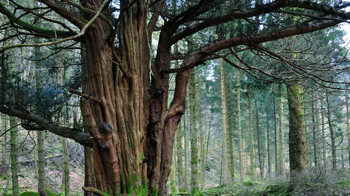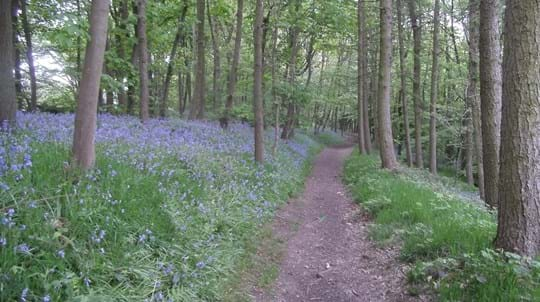
Burrs Wood
Unthank Holmesfield

Woodland Trust wood
11.82 ha (29.21 acres)
SK301755
Explorer 24
OS Landranger 119
On the edge of the Peak District National Park this ancient woodland is scenic and largely unspoilt providing a peaceful place to explore.
Burrs Wood is the perfect place to relax and enjoy all that nature has to offer. For those looking for a challenge it’s also a wonderful place to explore a steep walk.
Features
- Public access
- Spring flowers
- Broadleaved woodland
How to get to Burrs Wood
Just 10 miles from Sheffield and Chesterfield, Burrs Wood is an ancient woodland covering the valley sides of a small stream on the edge of the Peak District National Park, near the hamlet of Holmesfield.
Burrs Wood lies along Unthank Lane on the edge of the Peak District National Park.
Leaving Holmesfield on the B6054, travel west past the Horns Inn and Traveller’s Rest pubs on either side of the road. Take the first exit at the mini roundabout onto Cartledge Lane.
After 1.2km (0.8 miles), take the first right onto the B6051 (Cardwell Lane) towards Hathersage. Continue for 0.8km (0.5 miles) and take the first left onto Unthank Lane, signposted to Unthank. After 1.4km (0.9 miles) the entrance to the wood is on the right.
The closest train station is in Chesterfield, on the East Midlands Railway Line.
Visit National Rail for more information
The hamlet of Millthorpe a mile and a half away is served by a limited bus service. The road from Millthorpe to the wood is a steep and narrow country lane, so please take care.
Visit Traveline for more information.
Burrs wood is a mile and a half away from the hamlet of Millthorpe. Walk southeast and turn right onto Millthorpe Lane. Follow this road and turn right onto Cordwell Lane, walking for half a mile, before turning left onto Unthank Lane. Burrs Wood will be on the right.
The road from Millthorpe to the wood is a steep and narrow country lane, so please take care.
Facilities and access
Access to the wood is via a squeeze gap.
A narrow stone footpath runs as far as the central stream from the road and from there an unsurfaced circular path takes in the western side of the wood.
The circular path is steep and muddy in places with several stepped sections, so please take care.
There is room for one or two small cars in front of the gate.
There are no toilet facilities at Burr Wood. The nearest public toilet is at Dronfield.
Wildlife and habitats
Burrs Wood is part of a wide scatter of small broadleaved woods each isolated in a matrix of grazing and unimproved ground on the east edge of the Peak District.
Animals
There is a diverse range of invertebrates to be found here, including the notable Aleochara ruficornis rove beetle, along with other local species.
Trees, plants and fungi
Oak dominates Burrs Wood with some specimens probably well over 200 years old. Other tree species to look out for include birch, ash, rowan, sycamore and a scattering of numerous other native broadleaved species.
Understorey flora is also aplenty here. There is an abundance of wildflowers, including bluebell, wild garlic and wood sorrel which can be seen in spring, while high summer brings with it the sickly-sweet smell of meadowsweet. Look out for sanicle, creeping jenny and golden saxifrage in wetter areas and the bracken in the open glades.
Head to the stream-sides of the wood for a glimpse of the striking bryophytes which form microhabitats here, and create a stunning visual feature as they carpet the rocky outcrops and stream boulders.
Habitats
Burrs Wood is a secluded and largely unspoilt ancient semi natural woodland, covering a valley with rocky outcrops, eroding river banks, gentler slopes and pockets of flat marsh. Look out for fissures, particularly on Unthank Bank, that have created botanically rich wet flushes.
About Burrs Wood
The structure, vegetation and undisturbed soils of Burrs all suggest it is ancient woodland, with tree cover dating back many centuries.
Many trees were established between 1850 and 1900. Records from 1898 show that the site was a mixed conifer and broadleaved wood, although there is only a scattering of larches today.
For most of the 20th century, and probably for many centuries before, Burrs Wood was grazed by sheep, and possibly cattle.
There is evidence of a small gravel pit at the southern edge of the site and it seems likely that small-scale mineral and rock was a common practice in the 18th and 19th centuries.
Things to do in Burrs Wood
The site contains scenic views, a fast flowing stream and attractive mature broadleaved woodland that can be explored from a winding path.
























